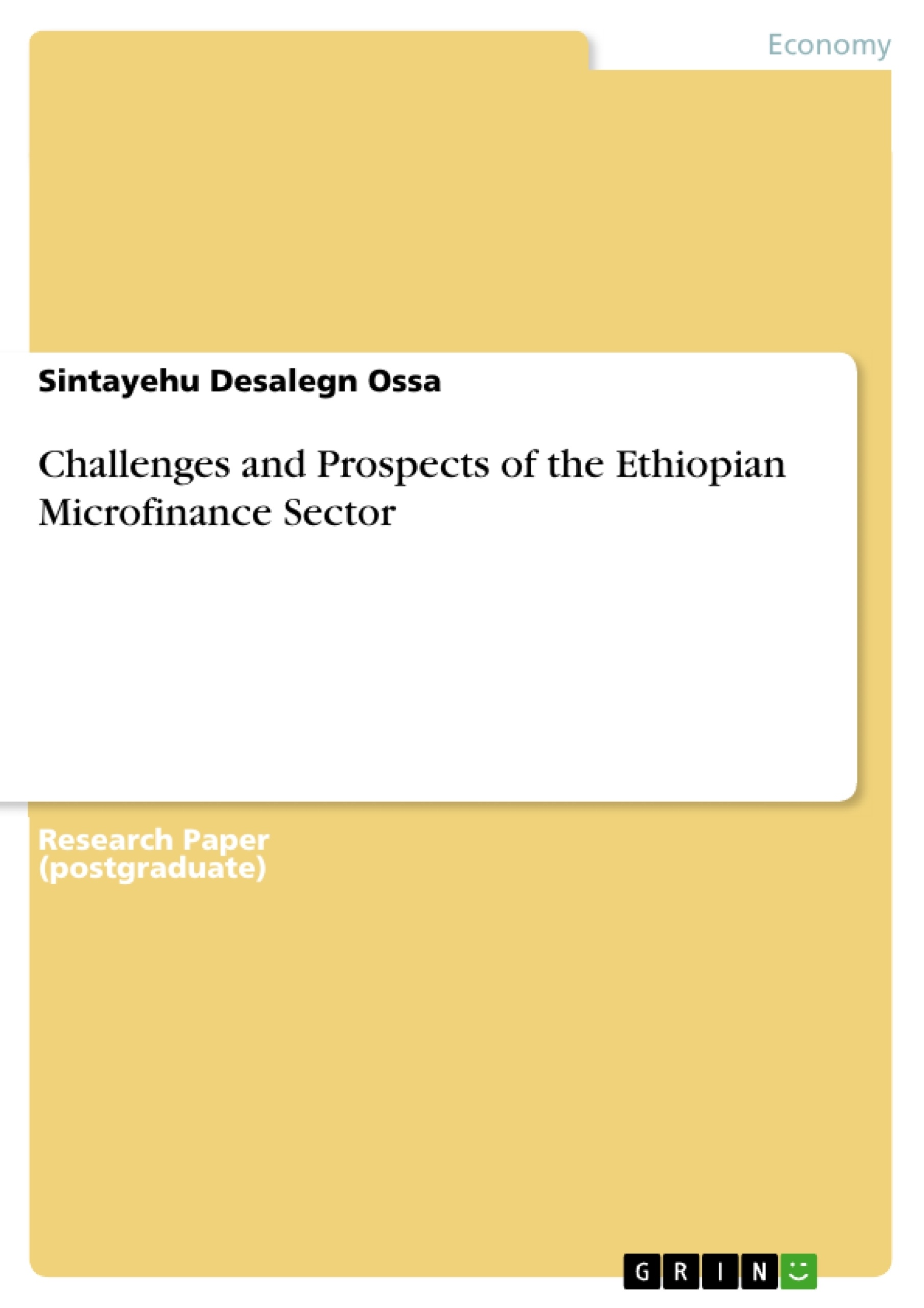The primary objective of this paper was to identify the root causes of the problems and challenges faced by Ethiopian microfinance sector and to, subsequently, recommend remedial measures.
In depth interviews have been used to identify and understand the problems and challenges faced by microfinance institutions.
This study depicted that Primary cause for all problems is fund shortage and; in turn, the primary cause for fund shortage is insufficient start up equity capital.
In addition, ownership structure is identified as supplementary cause of governance problems.
Finally, it is recommended that solving these couple of problems is a must to overcome all challenges of the sector as taking measures on other problems is unlikely to provide long-lasting relief from the undesired effect.
Inhaltsverzeichnis (Table of Contents)
- Introduction
- Statement of the problem
- Research Methods
- Challenges and Problems of the Sector
- Fund shortage
- Governance problem
- Conclusion
- Recommendations
Zielsetzung und Themenschwerpunkte (Objectives and Key Themes)
This paper examines the Ethiopian microfinance sector, aiming to identify the root causes of its challenges and recommend solutions for a sustainable and inclusive financial system.
- Fund shortage as a primary obstacle to growth and development in the microfinance sector.
- Insufficient start-up equity capital as the root cause of fund shortage.
- Governance problems stemming from ownership structure and weak financial capacity.
- The need for increased minimum capital requirements to enhance competitiveness and economies of scale.
- Addressing governance issues through strategic remedies, particularly regarding ownership structure and management expertise.
Zusammenfassung der Kapitel (Chapter Summaries)
The introduction highlights the crucial role of microfinance institutions in addressing the socio-economic needs of the poor, contributing to poverty reduction and equitable development. The paper then details the challenges faced by Ethiopian microfinance institutions, emphasizing the significance of financial access and income equality for sustainable development.
The statement of the problem further emphasizes the need for a sustainable microfinance sector that can effectively serve the poor. It explores existing studies that have identified various challenges, including limited outreach, product diversification, and weak internal control systems. The paper, however, aims to delve deeper, uncovering the root causes of these issues.
The chapter on research methods describes the in-depth interview process conducted with General Managers, Finance Managers, and other relevant stakeholders. This qualitative data forms the basis of the study's analysis.
The section on challenges and problems of the sector highlights fund shortage as the primary cause of various issues, including limited outreach and product diversification. The paper argues that insufficient startup equity capital is the root cause of this fund shortage. The chapter also explores governance problems, linking them to ownership structure and insufficient equity capital.
The conclusion summarizes the main findings, emphasizing that insufficient startup equity capital is the key factor hindering the development of Ethiopian microfinance institutions. It underscores the need to address both fund shortage and governance problems to ensure long-term sustainability and positive impact.
Schlüsselwörter (Keywords)
This study focuses on the Ethiopian microfinance sector, exploring the challenges and problems it faces. Key concepts include fund shortage, insufficient startup equity capital, governance problems, ownership structure, and sustainable development. The study also considers the impact of microfinance on poverty reduction, financial access, and inclusive development.
- Citation du texte
- Sintayehu Desalegn Ossa (Auteur), 2015, Challenges and Prospects of the Ethiopian Microfinance Sector, Munich, GRIN Verlag, https://www.grin.com/document/305177



